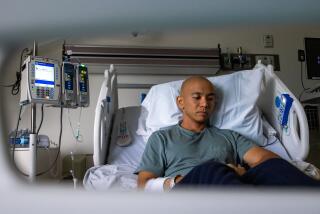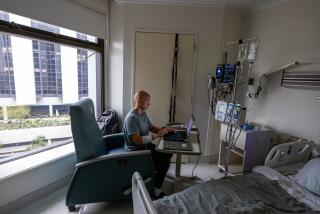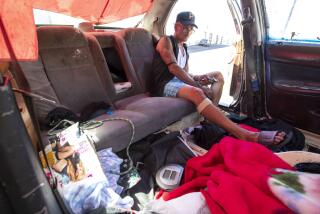Marrow Proves Incompatible : Transplant Is Out for Refugee Youth
- Share via
There was disheartening news Friday for 17-year-old Thoi Le, the Vietnamese refugee whose life doctors at Los Angeles Childrens Hospital have been battling to save through both medicine and diplomacy.
Dr. Stuart Siegel, head of the hospital’s hematology-oncology department, said that an Australian colleague, Dr. Vasilious Berdoukas, has reported that blood tests just completed in Bangkok, Thailand, showed that the bone marrow of young Le’s older brother and sister in Vietnam cannot be transplanted into the teen-ager.
Le is suffering from aplastic anemia, a rare and usually fatal disease in which the bone marrow stops producing blood cells and platelets. Siegel said that without therapy, patients usually die within three to six months, primarily from a hemorrhage or major infection.
Just to get permission for Berdoukas to enter Vietnam and obtain the necessary blood samples required a month of delicate negotiations between the Australian ambassador to Vietnam and Vietnamese government officials.
Berdoukas arrived in Ho Chi Minh City Thursday (Vietnam time) and met Le’s brother and sister at the airport, taking the needed samples there. The brother and sister live in Da Nang.
Berdoukas then flew to Bangkok, where he performed the tests, which showed that their marrow was not compatible with their younger brother’s and the transplant therefore could not be performed.
Before leaving for Vietnam, Berdoukas, who is also on the staff at Los Angeles Childrens Hospital, said that without the marrow transplant, his young patient probably will die. Even when a marrow transplant is successful, Siegel said Friday, chances of survival are about 75%.
Siegel said that the report on the blood tests “obviously is very disappointing.” But he said that Le “still has a small chance of recovering spontaneously on his own. And that chance is probably 5% or less.”
Le’s four other brothers, who live in Oxnard, were previously tested and shown to have incompatible bone marrow as well, Siegel said.
Siegel said that there is at least one other alternative in treating the frail teen-ager. “There also are some experimental approaches that one can take to try to encourage recovery,” he said, including the use of “a drug that, in about 20% to 25% of the cases, produces a significant improvement in the bone marrow function.”
But Siegel said that the cause of Le’s anemia is undetermined. A form of the disease caused by an underlying hepatitis has responded “particularly poorly” to treatment with the experimental drug, he said.
A decision on how Le will be treated will be made next week when Berdoukas returns to Los Angeles, Siegel said. Le, who now lives in the Ronald McDoanld House near Childrens Hospital, was told about the negative test results earlier Friday, Siegel said.
“He was at first happy to hear the doctor had been able to get into Vietnam to obtain the samples,” Siegel said, “but then very disappointed to hear that they could not be donors.”
Siegel said that Le, whose disease was diagnosed in April, is receiving regular transfusions of blood and platelets and is still strong enough to get around by himself. He said his condition is considered stable.
The doctor also said that “the situation is not hopeless. . . . We will still go on and try to do whatever is available to support him and avoid the complications of the disease, while at the same time looking for a spontaneous recovery.”
More to Read
Sign up for Essential California
The most important California stories and recommendations in your inbox every morning.
You may occasionally receive promotional content from the Los Angeles Times.













